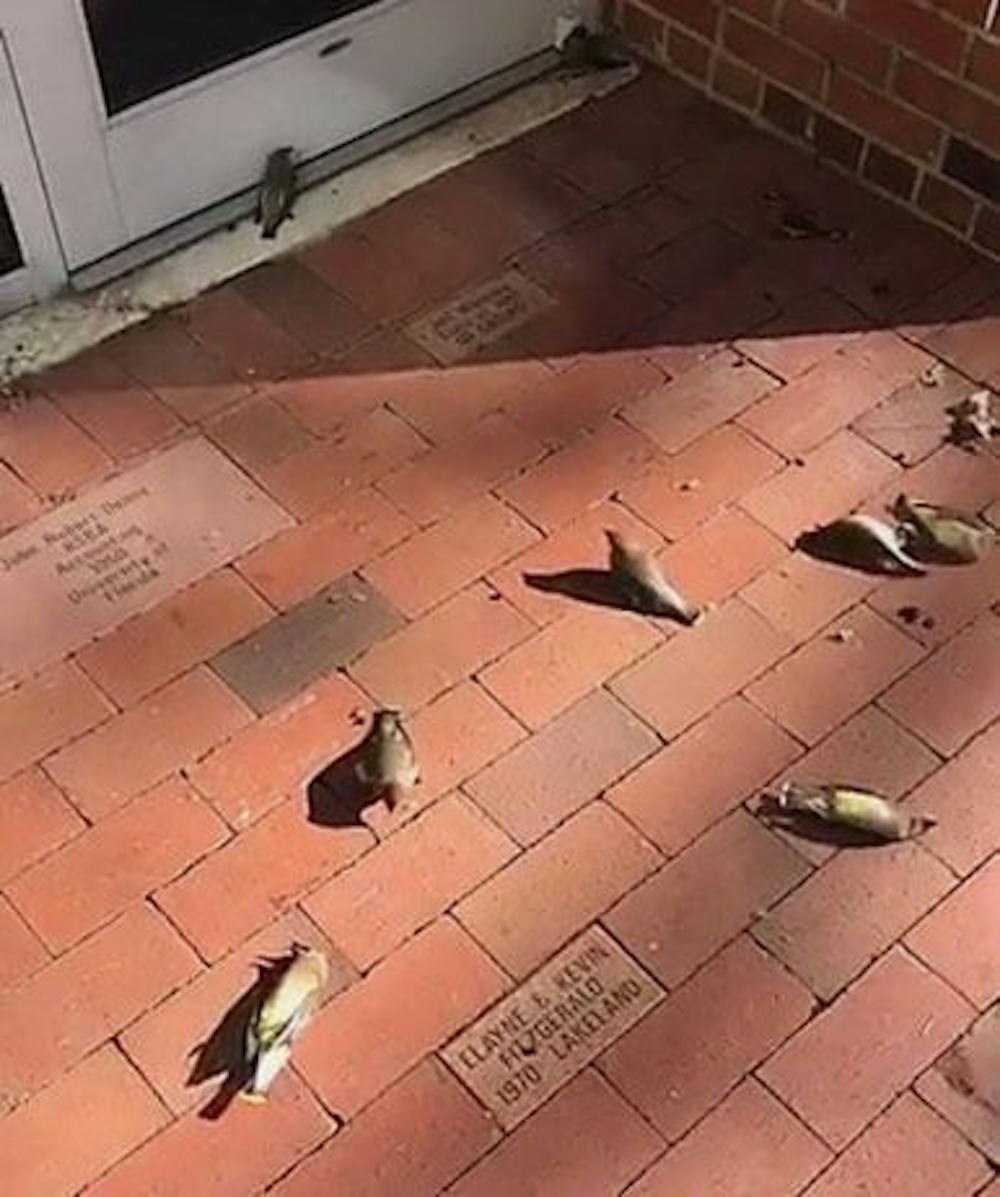As Ana Castro sat in her accounting class in Gerson Hall on Thursday, she heard the consecutive thumps of birds flying into the glass doors outside her classroom.
“Sometimes, two or three times in a row you just heard thumps, and you’d see the birds falling or just flying away,” the 20-year-old UF accounting sophomore said.
Throughout the duration of her class, she heard 20 thumps and found 10 dead birds on the ground after class.
Castro said there was nervous laughter and jokes like “accounting kills,” echoing in the classroom. Eventually, the class moved on.
“A lot of us didn’t know how to react,” she said. “It was really hard to concentrate in class, and I really thought it was something so sad to see.”
UF spokesperson Janine Sikes said UF Environmental Health and Safety picked up seven dead birds Thursday and is looking into the issue.
The Bird Collision Project, a group on campus to account for birds flying into UF buildings, has counted 117 bird deaths caused by collision since 2016, Mark Hostetler, a professor in UF wildlife ecology and conservation said. During winter, when birds are migrating to South America and fly through Florida, it’s problematic, he said.
He said people are seeing the birds, called cedar waxwings, crash into buildings on the west side of campus.
“Cedar waxwings are everywhere, and they go in flocks,” he said. “Sometimes they just can’t recognize what they’re seeing.”
Hostetler said the project has determined what buildings are most problematic for birds on campus, including Newins-Ziegler Hall, Broward Dining Hall, Jennings Hall and the Harrell Medical Education Building.
“When they’re flying about foraging, sometimes they can’t discern the highly reflective windows, the sun’s just right — they think they can fly through them,” he said.
To try and solve this problem, Hostetler said he and his team hung cords from the top of the window to the bottom every four inches apart, which is less than the average wingspan of the birds. He said this treatment helps break up the image the birds see reflecting on windows.
Hostetler said the treatment, which is currently on the third floor of Newins-Ziegler Hall, is effective. Since its installation in the beginning of Summer, there has been zero strikes.
“Imagine when they see a tree in the sky with no bars through it, they think they can fly into it,” he said. “But when you see those black lines on it, they think there’s something there and they can’t fly through it.”
Contact Christina Morales at cmorales@alligator.org. Follow her on Twitter at @Christina_M18.
Birds lying dead outside of a UF building. UF experts have tracked the deaths of birds migrating to South America, which fly into buildings on campus.





![Photo of the missing Leachianus “Leachie” gecko. [Photo courtesy of Mike Southwick]](https://snworksceo.imgix.net/ufa/907bd92a-0b29-40eb-a5fb-d7db7cf98b2f.sized-1000x1000.jpg?w=1500&ar=16%3A9&fit=crop&crop=faces&facepad=3&auto=format)
